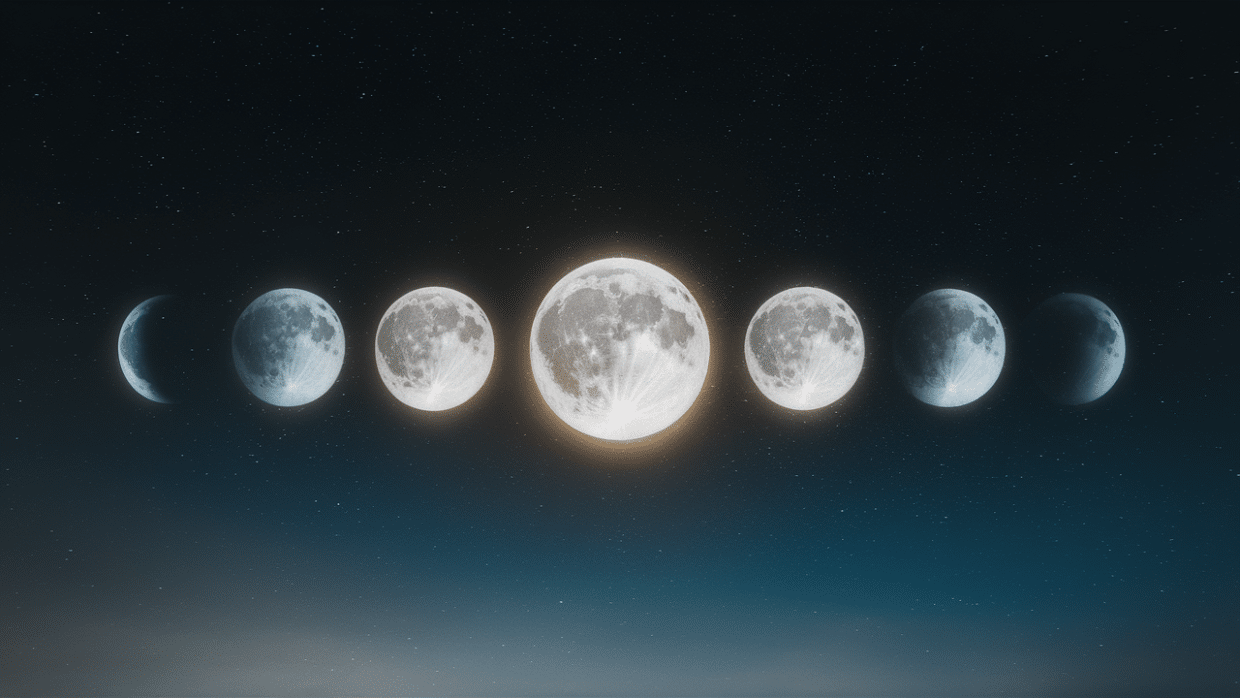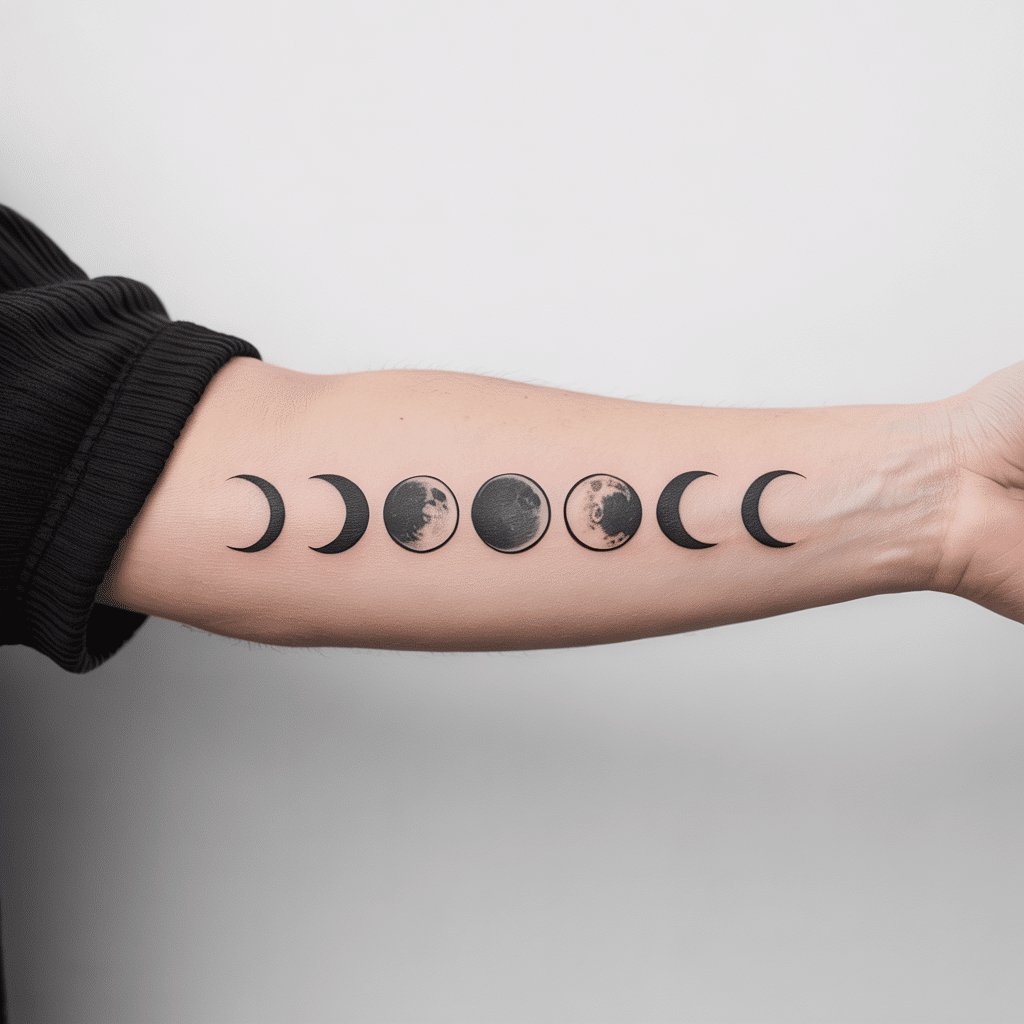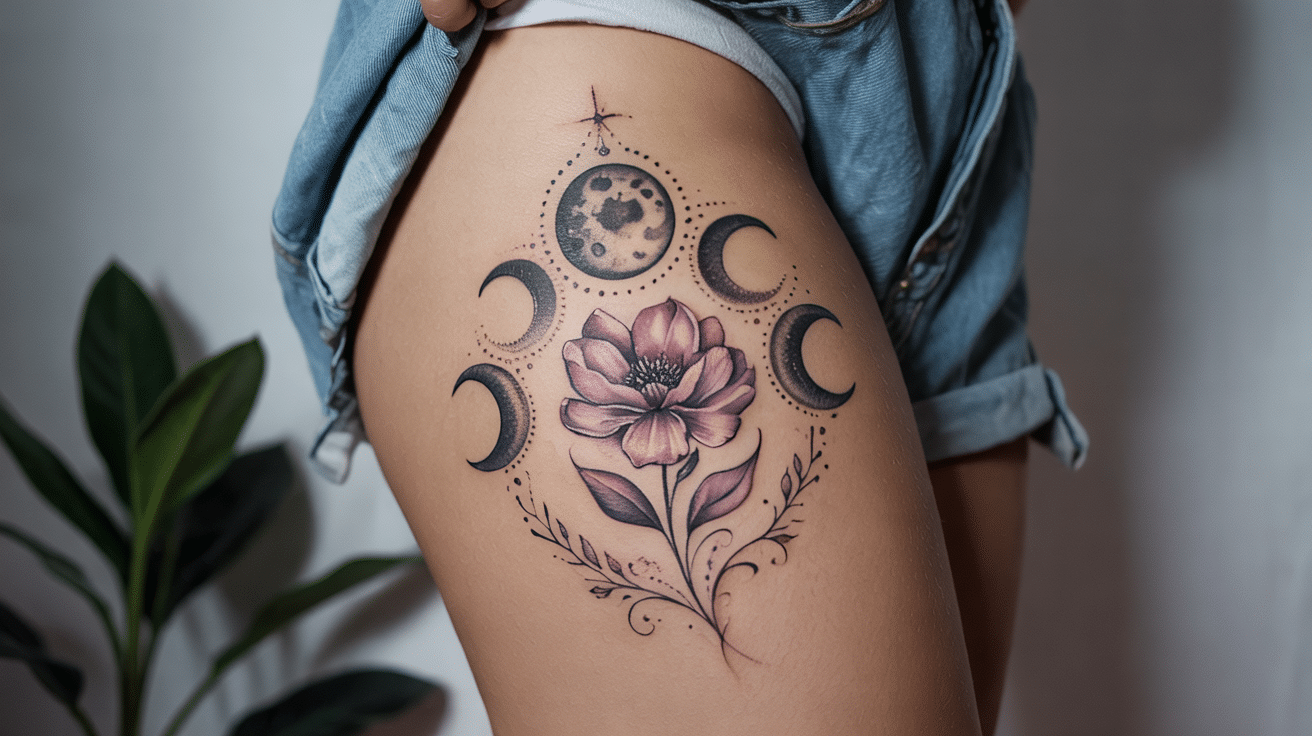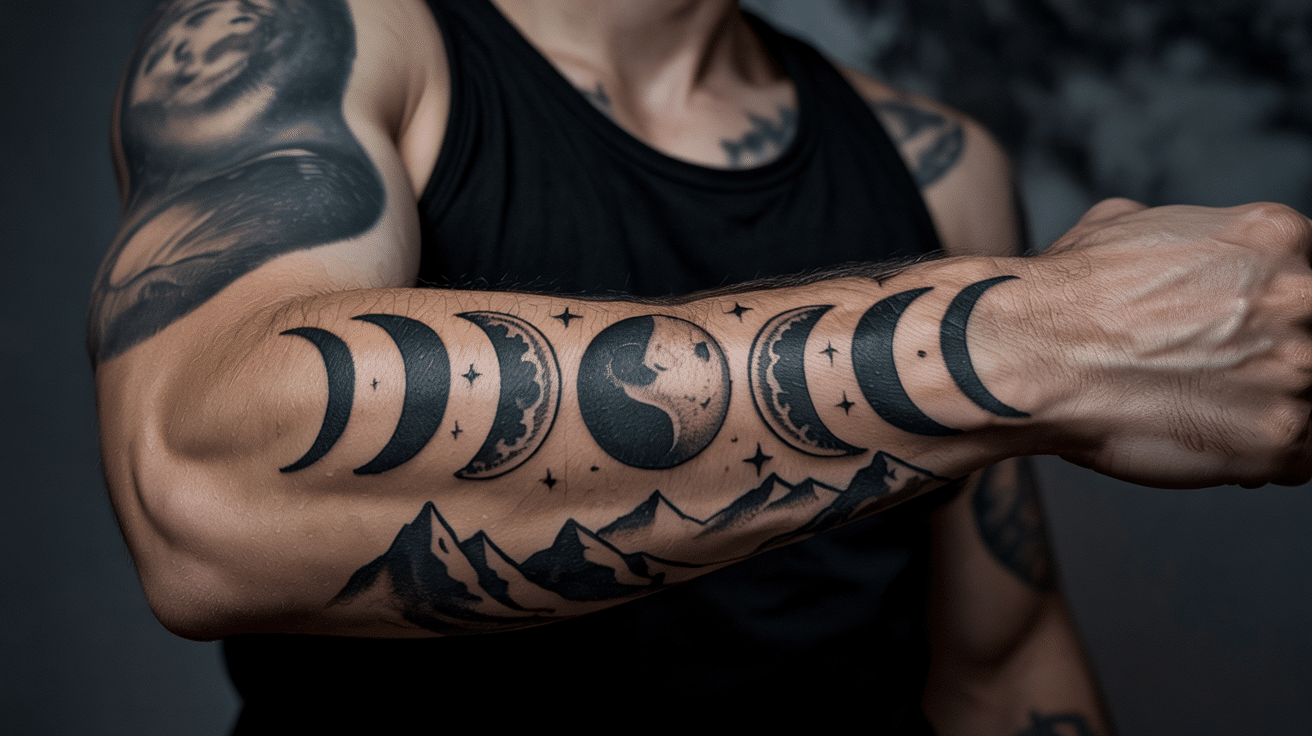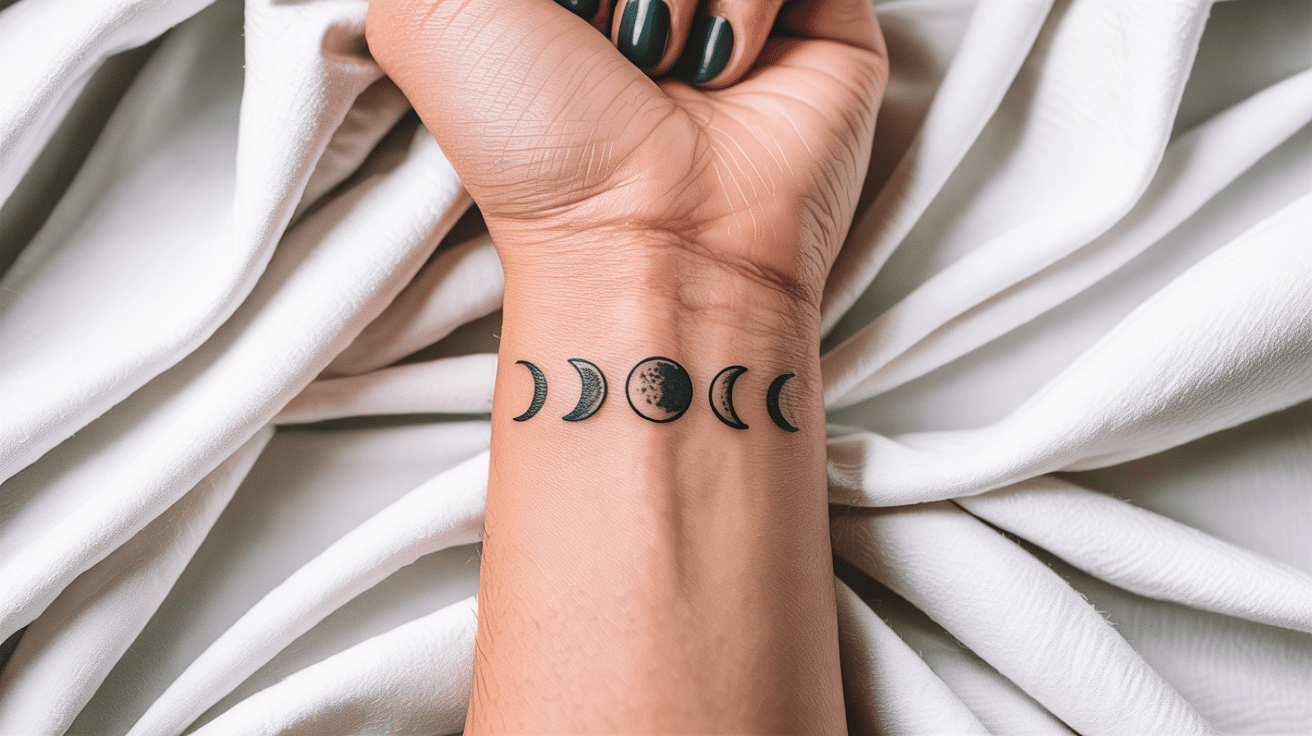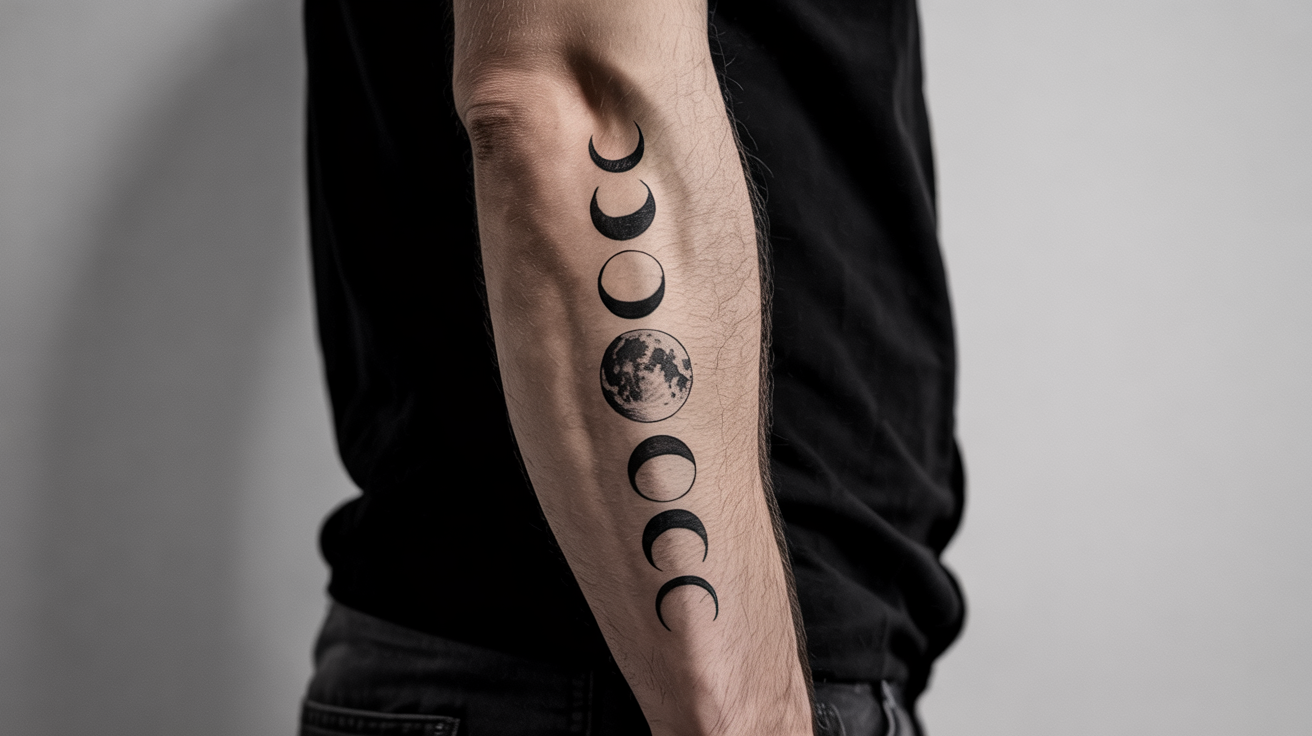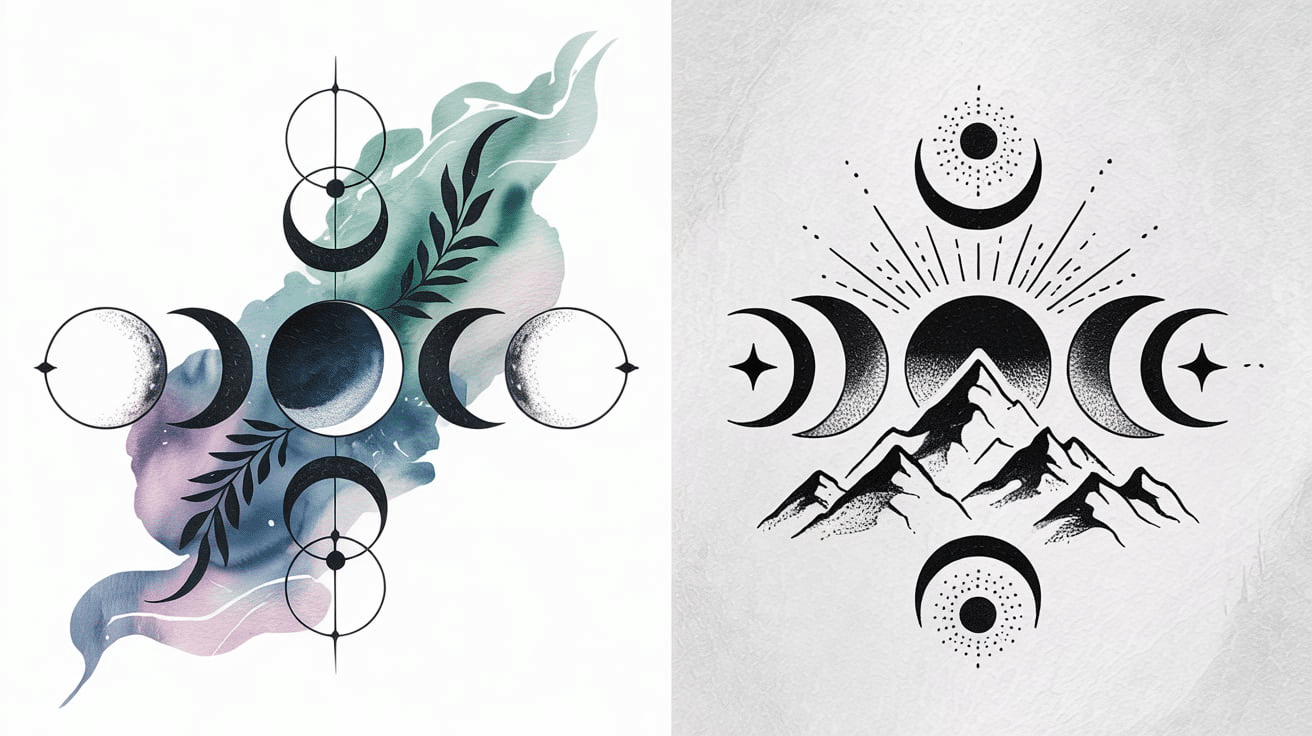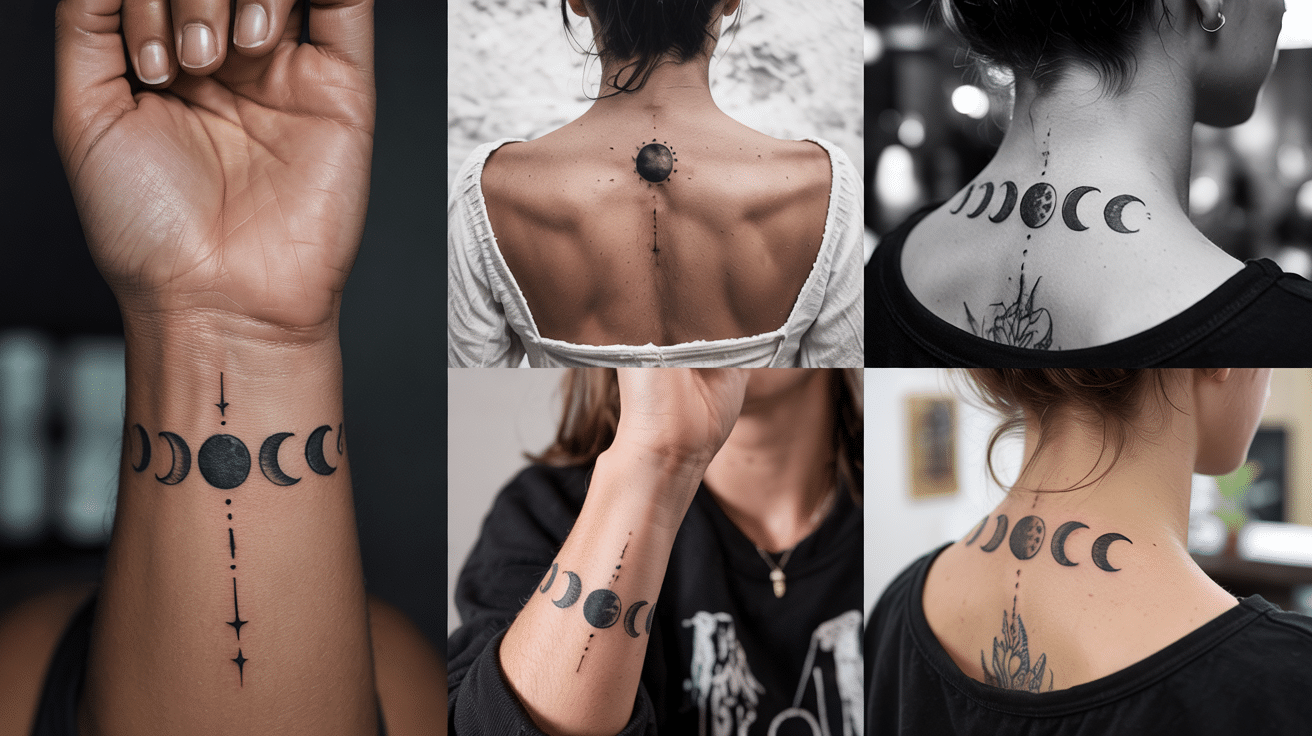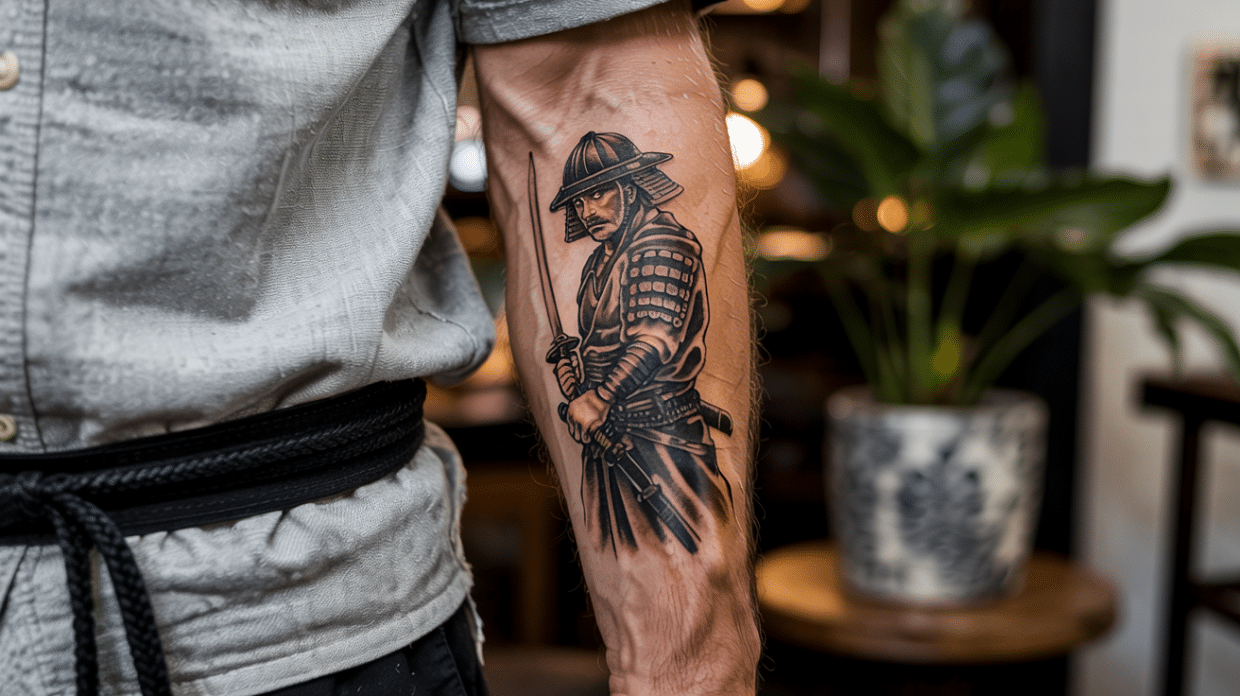Moon phase tattoos have become more and more popular in recent years. Why? Because they connect to something deep inside us all – the pull of natural cycles and the passage of time.
These tattoos show the moon’s different shapes, from new to full and back again. People love them because they can stand for so many things: change, growth, new starts, or letting go.
In this blog, you’ll learn what each moon phase means, how to pick the right one for your story, where to place it on your body, and design ideas that work for everyone. By the end, you’ll know if a moon phase tattoo is right for you.
What Do Moon Phase Tattoos Represent?
Moon phase tattoos show the different stages of the moon. They carry deep meaning about life changes and our link to nature’s patterns.
General Symbolism
Moon phase tattoos show the different shapes the moon takes throughout its cycle. These tattoos stand for growth, change, renewal, and reflection. Just as the moon goes through different stages, people also change and grow.
The moon’s cycle reminds us that change is normal and needed. When the moon is new (not visible), it marks a time for fresh starts. As it grows fuller, it shows progress and growth. The full moon points to completion and success. When it starts to shrink, it shows a time to let go and reflect.
Many people get these tattoos to remind themselves that life has ups and downs. The moon never stays in one phase—it always moves forward, which can help people stay hopeful during hard times.
Cultural Meanings
Different cultures view moon phases in unique ways:
In Chinese culture, moon phase tattoos show balance and renewal. They remind people to accept life’s natural cycles.
Wiccan traditions see the moon as tied to woman’s energy and magic. The changing moon phases match with different types of power and natural forces.
Celtic groups saw the moon as a guide through darkness and change. They linked it to inner wisdom.
Native American tribes often viewed the moon as a clock for planting and hunting. The phases helped them track seasons and plan important tasks.
Across many cultures, the moon is seen as a symbol of female energy and balance between light and dark parts of life.
Emotional & Mental Health Meanings
Moon phase tattoos can help with mental and emotional health. They serve as a sign of healing and moving through tough feelings.
Just as the moon changes but always returns, these tattoos remind people that bad times don’t last forever. For those who deal with mood changes or mental health issues, the moon phases show that ups and downs are part of being human.
The tattoo can mark personal growth after hard times. Many people get them after finishing treatment, ending bad relationships, or making it through loss.
The moon phases also remind us to let go of what we can’t control. Like the moon that must go through each phase, we must accept change as part of our path.
Want to look deeper into what the moon means in tattoo art beyond just its phases? Read more here: Moon Tattoo Meaning.
Meaning of Each Moon Phase Tattoo
Each phase of the moon carries its own special meaning when used in tattoo art. The full cycle tells a story of growth, peak, and renewal.
1. New Moon
The new moon phase shows a completely dark moon. It stands for new starts, clean slates, and setting goals. Many people choose this symbol when beginning a new chapter in life.
This phase reminds us that even in darkness, growth is happening beneath the surface. It’s about potential and the magic of starting fresh.
2. Waxing Crescent
The waxing crescent appears as a thin slice of light. This phase stands for building intentions, growing hope, and taking first steps toward goals.
It marks the early stage of growth where things are just starting to take shape. Many see it as a sign to stay patient while working toward something new.
3. First Quarter
The first quarter moon shows half the moon lit up. This phase represents making key choices, finding inner strength, and taking clear action.
It marks a time when goals become more solid and real work begins. This symbol reminds us to stay strong when facing obstacles on our path.
4. Waxing Gibbous
The waxing gibbous moon is almost full but not quite there. It stands for fine-tuning plans, doing inner work, and getting ready for the peak.
This phase is about paying attention to details and staying focused. It reminds us that success often comes after careful work behind the scenes.
4. Full Moon
The full moon shows the entire moon lit up. It represents total clarity, peak power, and seeing the full picture of situations.
Many choose this phase to mark times of completion, success, or full understanding. It’s the most known moon phase and carries strong energy in many beliefs.
5. Waning Gibbous
The waning gibbous starts to darken after being full. This phase stands for sharing with others, feeling thankful, and looking inward.
It marks the time to share what you’ve gained and start thinking about what to keep or let go. Many see it as a time for teaching others.
6. Last Quarter
The last quarter moon is half dark. This phase represents letting go, forgiving past hurts, and making space for new things to come.
It’s a powerful symbol for those looking to move past hard times or break old patterns. This moon phase helps remind us that ending things makes room for growth.
7. Waning Crescent
The waning crescent is a thin slice of light before the moon goes dark. It stands for rest, quiet thinking, and getting ready for a new cycle.
This final phase before rebirth reminds us of the value in slowing down and looking back before moving forward. It marks completion and the calm before a new start.
Moon Phase Tattoos: Beyond Gender
Moon tattoos speak to everyone, regardless of gender identity. They represent universal human experiences of change, growth, and connection to natural cycles that we all share.
Moon Phase Tattoos and Feminine Energy
The moon’s 28-day cycle mirrors menstruation, creating a natural link to womanhood. Across cultures, the moon symbolizes female energy, intuition, and emotional wisdom.
Many women choose moon tattoos to honor their bodies’ natural rhythms and inner knowing. The moon’s control over tides parallels women’s life-giving abilities, forming a strong connection that transcends time.
These tattoos often mark significant female experiences like motherhood or personal growth. Even those not identifying as women may use moon imagery to honor their intuitive, feeling-centered qualities.
Moon Tattoos for Men: Breaking the Stereotypes
While often seen as feminine, moon tattoos have a strong appeal for men too. The moon stands for change, inner strength, and natural power – qualities that speak to everyone regardless of gender.
Men often pick moon designs with stronger lines and placement on arms, chest, or back. Some add geometric shapes, mountains, or wolves to bring their own style to the lunar theme.
Many cultures have male moon gods or link the moon to male traits like protection and guiding others through dark times. These meanings make moon tattoos a good fit for men wanting symbols with depth.
Some men choose moon tattoos to mark times of personal change or to honor night work, like military night operations, fishing, or security roles. The connection to timing and cycles fits well with many men’s life stories.
Choosing the Right Moon Phase Tattoo for You
Picking the right moon phase for your tattoo means looking at where you are in life and what message speaks to you most. Your choice can tell your story through this ancient symbol.
Match the Phase to Your Life Stage
Matching your tattoo to your life helps make it meaningful. If you’re starting something new, the new moon might feel right. For those at a high point, the full moon can mark that success.
People going through changes often pick the first quarter to show they’re moving forward. Those letting go of the past might choose the last quarter or the waning crescent.
Think about what you want to remember when you look at your tattoo. Each phase carries different energy that can support your goals or remind you of your growth.
Ask yourself what you need more of in your life. Looking for new starts? The new moon calls to you. Need to release old pain? The waning phases offer that message.
Symbolism in Combinations
Full cycle designs show the complete story of growth and change. They speak to the idea that all parts of life—the bright and dark times—have value and purpose.
Many people choose to show multiple phases in one tattoo to mark a long path they’ve walked. Others like the balanced look of the full cycle as a reminder that life keeps moving.
Some add stars, plants, or other nature items to their moon phase tattoos to add more meaning. These extras can make your tattoo more personal to your story.
The spacing and size of each phase in your design can also change the meaning. A bigger focus on certain phases shows which parts of the cycle matter most to you.
Tattoo Styles and Design Ideas
From clean lines to detailed art, moon phase tattoos can fit many styles. The design you pick will shape how your tattoo looks and feels to others who see it.
Minimalist Moon Phase Tattoos
Simple line drawings of moon phases make clean, small tattoos perfect for wrists, fingers, or behind ears. These use just black ink with thin lines and little shading.
This style works well for first-time tattoo fans or those who like subtle body art. The basic shapes still carry all the meaning while fitting small spots on the body.
Small dots can mark each phase instead of full circles, making an even more basic design. These tiny tattoos often use just black ink and heal quickly.
Spine and Forearm Designs
Placing moon phases down the spine links them to the body’s energy centers. Many see this as joining moon energy with their own life force.
The spine placement tells a story of growth from bottom to top, with each moon stage marking a step in personal growth. This makes a striking back piece that flows with the body.
Forearm designs let you see your moon phases daily. These often run from wrist to elbow, either on the inside arm for private viewing or outside to show others.
These longer designs give room to space out the phases and add small stars or clouds between them. The flow of the arm gives the tattoo a natural curve.
Feminine and Masculine Takes
While moon tattoos have no gender, some styles lean into cultural ideas about feminine and masculine looks. Softer designs use thin lines, watercolor washes, and flowing shapes.
More bold takes might use thick outlines, sharp edges, and less shading. These choices don’t change the meaning but shift how the tattoo feels visually.
Some artists add plants or animals that fit with gender themes – flowers or deer for more feminine looks, wolves or mountains for more masculine styles. These extras help make the moon phases fit the person’s self-image.
Ideal Placements for Moon Phase Tattoos
Where you put your moon phase tattoo adds to its meaning. Each body spot brings its own story to the moon’s message, making your choice of location just as important as the design itself.
Wrist
The wrist makes moon phases easy to see, both for you and others. This spot works well for those who want daily reminders of their goals or life changes.
Wrist tattoos can be shown or hidden as needed, giving you control over when to share your moon story. The thin skin here makes small details stand out clearly.
Many people find comfort in being able to look down anytime and see their moon phases, making this spot good for meaningful tattoos that guide daily choices.
Spine
Moon phases down the spine create a strong visual of life’s path. The backbone, which holds us up through life, pairs well with the moon’s story of change and growth.
Each moon phase can line up with different parts of the back, sometimes matching with energy points in the body. This creates a feeling of total body connection to the moon’s message.
Spine tattoos hurt more but last well, showing the serious nature of marking life changes. The hidden location makes this choice more personal, seen only when you choose to show it.
Ankle/Foot
Placing moon phases on the ankle or foot links them to your life path and physical steps forward. These spots suit people who see life as a walk through different stages.
Foot tattoos fade faster from daily wear but can be easily hidden in work settings. The ankle offers better ink staying power while still keeping the connection to movement.
The curve of the ankle allows moon phases to wrap naturally around the body, creating a flowing design that moves with you as you walk your path.
Behind the Ear or Neck
Hidden spots like behind the ear or on the neck keep your moon story private. These places work for those who want the meaning for themselves, not for show.
These small areas fit just one or two moon phases, making them good for marking specific times rather than full cycles. Short hair shows these tattoos, while long hair can hide them.
The neck area links to voice and expression, making it meaningful for those using moon phases to mark finding their voice or speaking their truth after quiet times.
Final Thoughts
Moon phase tattoos mean what you want them to mean. They can show your own story of growth, change, and moving through life’s ups and downs.
These tattoos have been around for ages and will stay popular because they speak to basic human truths. They remind us that life keeps moving and that both good and hard times pass.
Think about what phase calls to you most. Is it a new start? A time of letting go? Or the full picture of life’s cycle?
Tell us which moon phase speaks to you most in the comments below.


